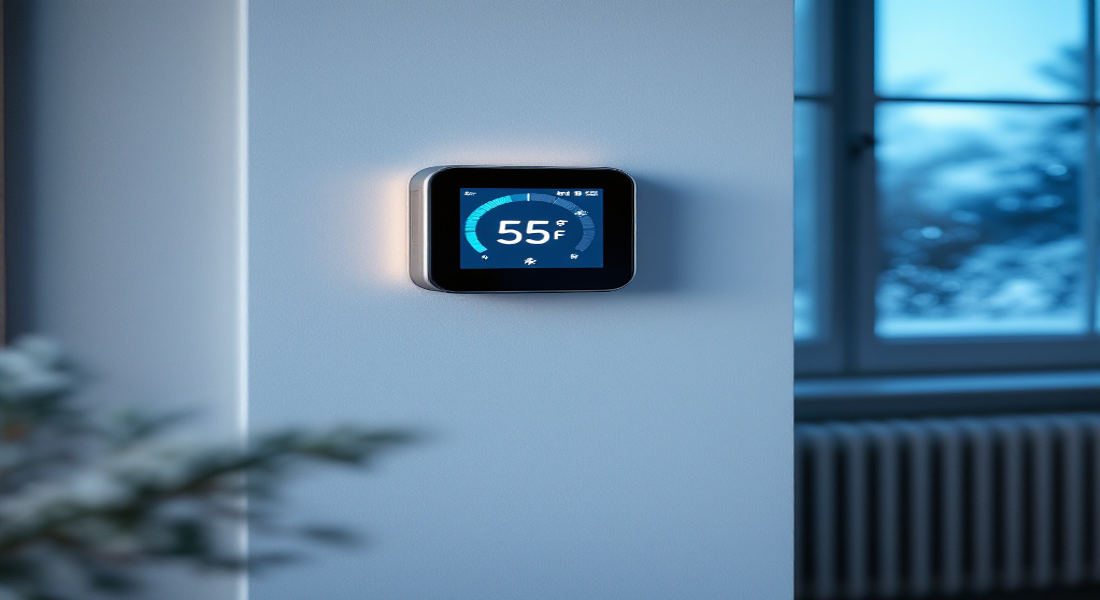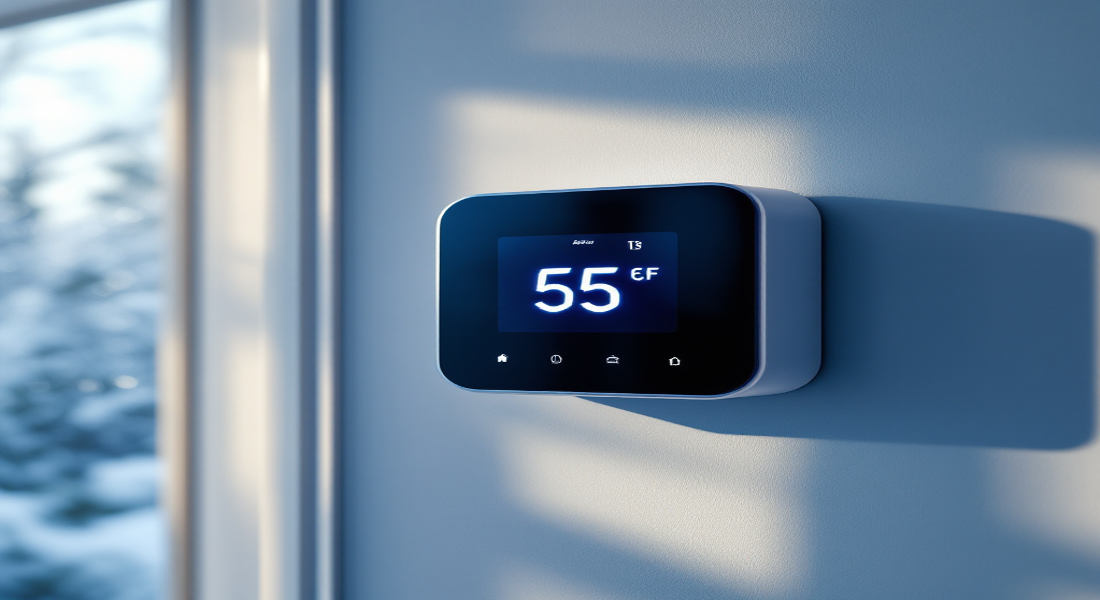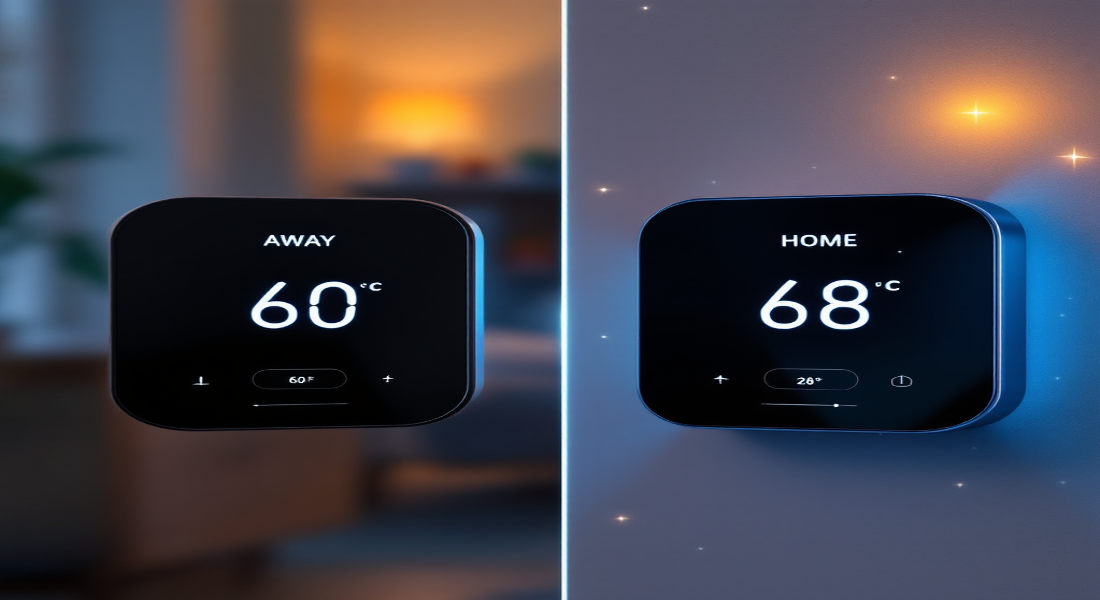When the winter chill sets in and you’re planning to leave your home for a few days, one of the most important decisions you’ll need to make is what temperature to leave your house in winter when away. Setting the right thermostat temperature is crucial—not only to protect your home but also to avoid skyrocketing energy costs.
Why Setting the Right Temperature When Away in Winter Matters
It might seem tempting to turn off your heating entirely while you’re away to save money, but this can lead to more harm than good. Let’s explore why maintaining the right indoor temperature is critical during winter absences.
Preventing Frozen Pipes and Water Damage
One of the biggest risks of turning your heating off or setting it too low is frozen pipes. When the temperature inside your home dips below freezing, the water in your pipes can freeze, expand, and potentially burst. This can lead to costly water damage and a major headache upon your return.
By maintaining a steady temperature, usually around 60°F (15°C), you can prevent your pipes from freezing and ensure your plumbing system remains intact.
Energy Savings and Cost Efficiency
Contrary to popular belief, keeping your heating on at a moderate level while you’re away can actually be more energy-efficient than turning it off completely. When you let your home get too cold, your heating system has to work harder to warm it back up, which can spike your energy bills.
A consistent, lower temperature ensures your home stays at a manageable level without wasting energy.
Maintaining Home Integrity and Comfort
Cold temperatures can affect more than just pipes. Extreme cold can damage wood, drywall, and even electronics. Keeping your thermostat at the recommended range helps protect the structural integrity of your home and ensures it’s comfortable when you return.
Common Misconceptions About Turning Off Heating
Some people believe turning off heating completely is the best way to save money while away. However, this can lead to frozen pipes, higher energy costs, and an uncomfortable home when you return. Instead, it’s better to aim for a safe and steady temperature.
Expert Recommended Temperature Settings for Winter Vacations
What’s the magic number for your thermostat when you’re leaving your house in the winter? Experts have weighed in, and the consensus might surprise you.
You may also read (how shine home).
The Safe Range: 60°F (15°C)
Most experts recommend keeping your home’s temperature at 60°F (15°C) or above when you’re away. This ensures your pipes are safe from freezing while keeping energy usage reasonable.
Adjustments Based on Climate
If you live in a milder climate, you might be able to lower your thermostat slightly to around 55°F (13°C). However, in areas where winters are harsh and temperatures frequently dip below freezing, it’s safer to stick to 60°F or higher.
Why Temperatures Below 55°F Are Risky
Anything below 55°F (13°C) increases the risk of frozen pipes, even in well-insulated homes. Additionally, colder temperatures can make it harder for your heating system to recover when you return, leading to higher energy usage and potential system strain.
Use “Vacation” or “Hold” Settings
Modern thermostats, especially programmable or smart ones, often have vacation or hold settings. These modes maintain a consistent temperature while minimizing energy use, making them ideal for extended winter absences.
Factors to Consider When Choosing Your Away Temperature
Not all homes are the same, and several factors can influence the best temperature for your specific situation.
You may also read (is yelling in your house considered illegal).
Home Insulation Quality
If your home is well-insulated, it will retain heat longer, meaning you can set your thermostat slightly lower. However, if your home has poor insulation, you’ll need to keep the temperature higher to prevent heat loss.
Length of Time Away
For short trips (a few days), a lower temperature might suffice. But for extended vacations, it’s crucial to maintain a consistent temperature to avoid long-term damage.
Pets and Plants
If you have pets or plants in your home, they may require a specific temperature range to stay healthy. In such cases, you’ll need to adjust your thermostat accordingly, often to around 65°F (18°C) or higher.
Local Weather Conditions
Check the weather forecast for your area. If extreme cold or winter storms are expected, it’s wise to keep your home warmer than usual to counteract the outdoor conditions.
Heating System and Thermostat Technology
Older heating systems might struggle to maintain consistent temperatures, especially in freezing conditions. If you have a smart thermostat, you’ll have more flexibility and control, even when you’re away.
Practical Tips for Maintaining Your Home Temperature Efficiently
Keeping your home warm while being energy-efficient doesn’t have to be complicated. Here are practical tips to help you maintain your home’s temperature.
Seal Windows and Doors
Drafts around windows and doors can let warm air escape. Use weatherstripping or caulk to seal any gaps, ensuring your home retains heat.
Use Insulated Curtains and Rugs
Thick, insulated curtains can help trap heat inside, especially at night. Similarly, rugs can add an extra layer of insulation on cold floors.
Avoid Blocking Heaters
Ensure your heaters or vents aren’t blocked by furniture or curtains, as this can disrupt proper heat circulation.
Maintain Your Heating System
Regular maintenance, such as cleaning air filters and servicing your furnace, ensures your heating system runs efficiently and reliably.
Leverage Smart Thermostats
Smart thermostats allow you to control your home’s temperature remotely, making it easy to adjust settings based on changing weather or your schedule.
Additional Winterizing Tips for When You’re Away
Winterizing your home goes beyond just setting the thermostat. Here are additional steps to protect your home while you’re away.
Task: Why It’s Important
Drain or Insulate Pipes Prevents freezing and pipe bursts
Shutting off the Water Supply Reduces the risk of leaks and water damage
Setting up Humidity Control Prevents dryness and protects furniture
Use Space Heaters Safely. Provides extra warmth in critical areas if needed
How to Use Technology to Manage Your Home Temperature Remotely
Modern technology makes managing your home’s temperature easier than ever.
Benefits of Smart Thermostats
Smart thermostats like Nest or Ecobee allow you to control your home’s temperature from your smartphone. You can make adjustments in real-time or set schedules for optimal efficiency.
Vacation Modes and Alerts
Many smart thermostats offer vacation modes, where they maintain a steady temperature while reducing energy use. They can also send alerts if the temperature drops too low, giving you peace of mind.
Integration with Security Systems
Some smart thermostats integrate with home security systems, creating a seamless way to monitor and manage your home while you’re away.
What to Do Upon Returning Home After Winter Absence
When you return home after a winter trip, follow these steps to ensure everything is in order.
- Gradually Raise the Temperature: Avoid stressing your heating system by increasing the temperature slowly.
- Inspect for Damage: Check for any signs of leaks, drafts, or frozen pipes.
- Restart Comfort Devices: Turn on humidifiers and other devices to restore indoor comfort.
You may also read (my partner entitled to half my house).

